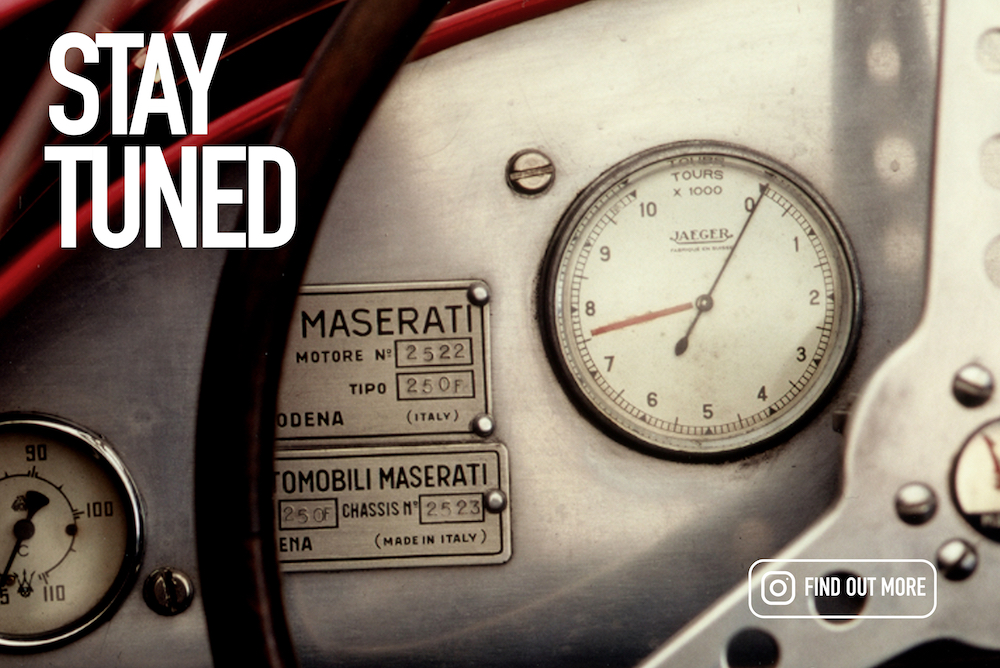Purists used to scoff at the 914. Part Porsche and part VW, it didn’t really fit in either camp. It used to be cheap, too. A bargain, even, especially considering the exotic layout and premium badge. And you could learn to love (or at least like) the looks.

Purists don’t scoff anymore, though—they haven’t for a while. 914s are no longer cheap, either.
Porsche has put out some ugly ducklings in more recent memory (looking at you, 996 and Panamera), but the 914 is arguably their original ugly duckling. Some versions are still attainable, still among the cheaper ways to slide into P-car ownership despite prices doubling in the last decade. Others are downright expensive more than tripling in price over the last decade. But they’re all fun, reasonably practical classics, now recognized as an important piece in the history of the company (well, companies) that built them.
Background
The second half of the 1960s was not the best of times for Volkswagen, at least not at home. Germany had its first postwar recession in 1966, while VW faced more and increasingly sporty domestic competition from Opel, Ford, and BMW. Wolfsburg needed an image boost, and its then current range-topper—the Type 34 Karmann Ghia—was on its way out. Porsche, meanwhile, looked to replace its entry-level 912 model that was also headed for retirement. As part of a development agreement between the two companies, which already shared history going back to the ’40s, VW asked Porsche to develop a model that would kill two birds with one stone. The 914 was that stone, planned around many of the components of Volkswagen’s upcoming 411 sedan but utilizing some Porsche parts and plenty of all-new pieces.
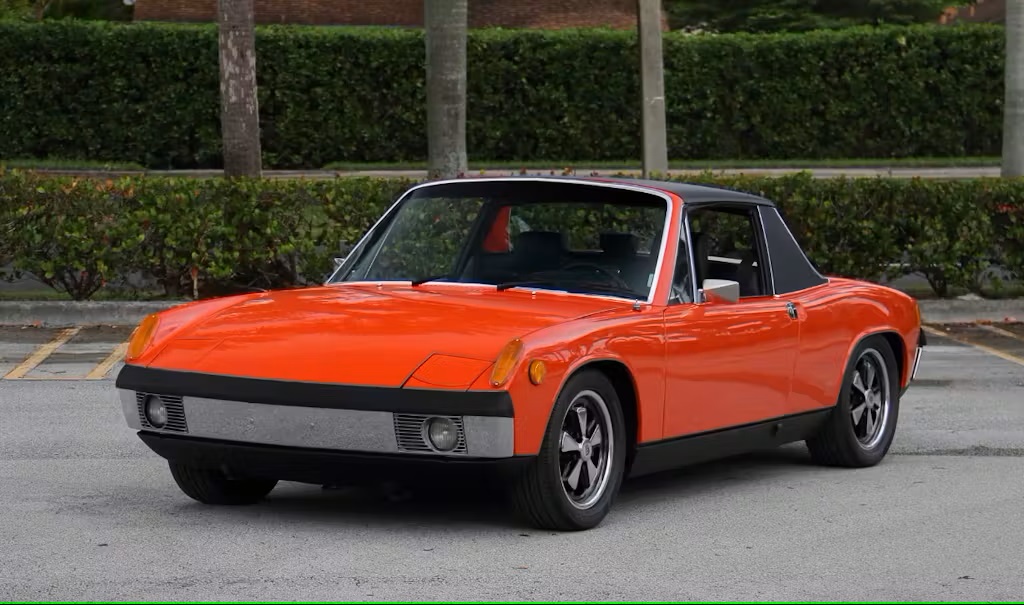
Mid-engine marvel with two personalities
By the late 1960s, mid-engine designs had conquered Formula One, Indianapolis and endurance sports car racing, while road-going sports cars like the Lotus Europa and Matra Djet brought mid-engine mania to the streets. Porsche wasn’t far behind with the 914. Although this was only the third street car ever introduced by Porsche, the 20-year-old company’s sports cars already had a distinctive look. This one didn’t have it. It didn’t look like any VW on the road, either. German mag auto motor und sport put it this way: “the 914 is not exceedingly pretty, but it is functional, low and sporty.” Sports Car Graphic, meanwhile, called it “a pleasant eyesore.” Wearing integrated bumpers and Porsche’s first ever pop-up headlights, the 914 was lower, wider, longer in wheelbase and more aerodynamic than the contemporary 911. It also boasted a lower center of gravity than Porsche’s signature sports car.
The long doors, the rear wheel tucking under the bodywork slightly, and the black lower side panels make it appear even lower. A trunk at each end also makes the 914 more practical than it looks. The removable targa roof panel fits in the rear trunk, while also giving the joy of open-air motoring but also the safety, noise reduction, and at least some of the rigidity of a coupe. The 914 boasted torsional stiffness equal to the contemporary 911 coupe and higher than that of the equivalent 911 Targa.
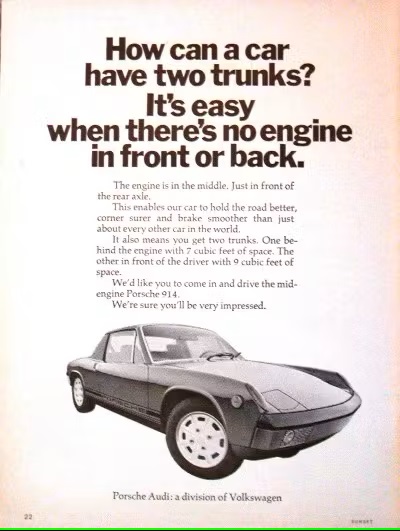
The 914 made its public debut at the 1969 Frankfurt Motor Show and went on sale for 1970. Nestled behind the driver and between the axles was one of two engines, and with them came two very different personalities.
The lower, mass-market model had a 1679-cc fuel-injected Volkswagen flat-four with 85 horsepower, shifting through a 5-speed manual. Underneath were suspension and steering similar to the setup in the 911, although there were now coil springs in the rear, and disc brakes front and rear. The whole package weighed in at just under a ton. This four-cylinder model, aka the 914/4, was built in full by Karmann, the Osnabrück-based contract manufacturer that had built the Karmann-Ghia and Beetle Cabriolet for Volkswagen as well as various coupe bodies for Porsche. To keep VW happy, these were badged and sold as “Volkswagen-Porsche” at Volkswagen dealerships in Europe. In the United States, which wound up buying most 914s, the 914 sold exclusively as a Porsche through the “Porsche+Audi” distributorship.
There was also a six-cylinder 914—the 914/6—which boasted 125 horsepower despite tipping the scales at only about 100 lbs more than the 914/4. The 914/6 got the Weber-carbureted 2.0-liter engine from the contemporary 911T (then the entry-level 911), different gearing, ventilated front disc brakes, and other upgrades like chromed bumpers and special wheels. The proper Porsche exhaust note with the extra two cylinders is distinctive, but visually there isn’t much to distinguish a 914/4 from a 914/6. One quick thing to look out for, though, is the wheels: a 914/6 has five wheel studs while the 914/4 has four. The 914/6 was also screwed together differently. Karmann built, painted, and trimmed the bodies, but for final assembly the cars went through the same line as the 911s at Porsche in Zuffenhausen. Even in Europe, this version was sold exclusively as a Porsche with no VW badges to be seen.

Reception and changes
With its confusing mixed heritage and high price, the 914 raised some eyebrows when it arrived in the States. It got mixed reviews in the press, too. The main criticisms of the four-cylinder model came down to simple performance per dollar. Most magazine tests found that on acceleration the 1.7-liter 914 was no faster than the old 912, and was more on par with the old 356 from the early ’60s. This was 1970, remember. American drivers were living at the peak of American muscle and were waist-deep in sports cars, too. The game-changing Datsun 240Z was already on the scene. Car and Driver was blunt, calling it “the slowest over $2,500 sports car we’ve tested in several years,” and bemoaning “at low speeds the engine is distressingly weak…and there are never any bright spots in the performance to offset the annoyance.” C/D also took a dig at the interior—”[n]o one else in this price class would dare offer such meager instrumentation,” and another one at the styling—”the fluidity of line of an Erector set project.”
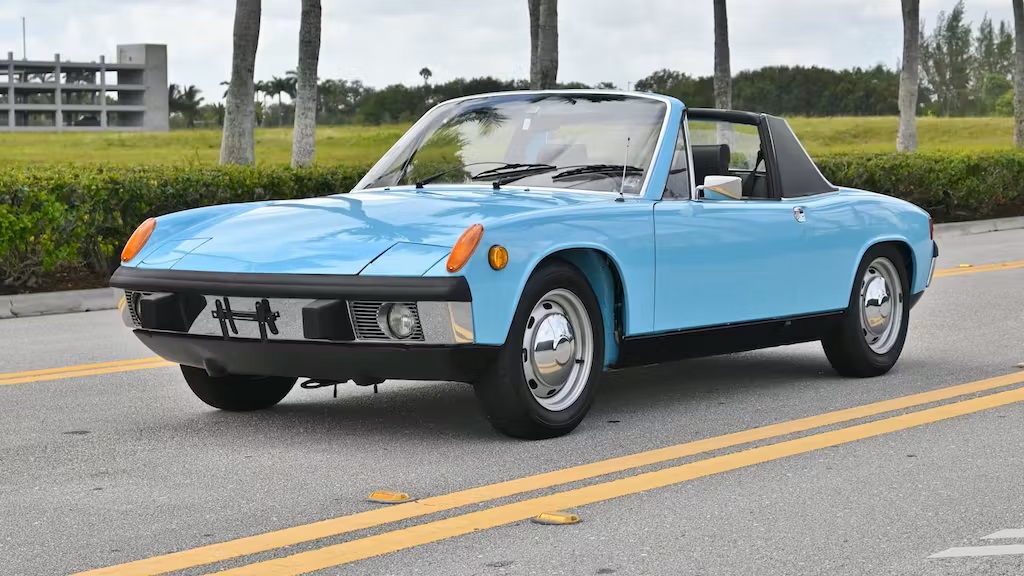
Road & Track felt similarly, concluding that “around town and on winding roads, the 914’s performance can be characterized as rather busy, noisy and torqueless,” but “on the highway, quiet and relaxed.” Sports Car Graphic gave genuine compliments to the impressive outward visibility, and a backhanded one to the acceleration, which “is tolerable for a Porsche, but outstanding for a Volks.” Other critiques took aim at the 914’s vague shift linkage and the non-adjustable passenger’s seat, but there was plenty of praise for the sharp cornering of this low, wide, mid-engine car.
Motor Trend was generally more forgiving, noting that “[h]igh speed cornering in the 914 is an enjoyable experience with mild doses of over- and understeer…although the basic cornering characteristics are neutral…it is a most forgiving car.” Motor Trend also gave 914 its Import Car of the Year award in 1970.
Predictably, the 914/6 got more love. Due to the complexities of Porsche’s relationship with VW and Karmann, however, Porsche was unable to price the 914/6 competitively. Its price was nipping at the heels of entry-level 911s, so comparisons were inevitable. “The main questions,” mused Road & Track, are “How much faster than the four is it? Is it as fast as the current 911T? Is it worth $2,500 more than the four? Is it worth within $500 of the 911T? The answers, respectively, are: Much. Not quite. Yes. No.” Car and Driver concluded “[i]t’s about half the cost of a 911S – and about half as good as a 911S.”
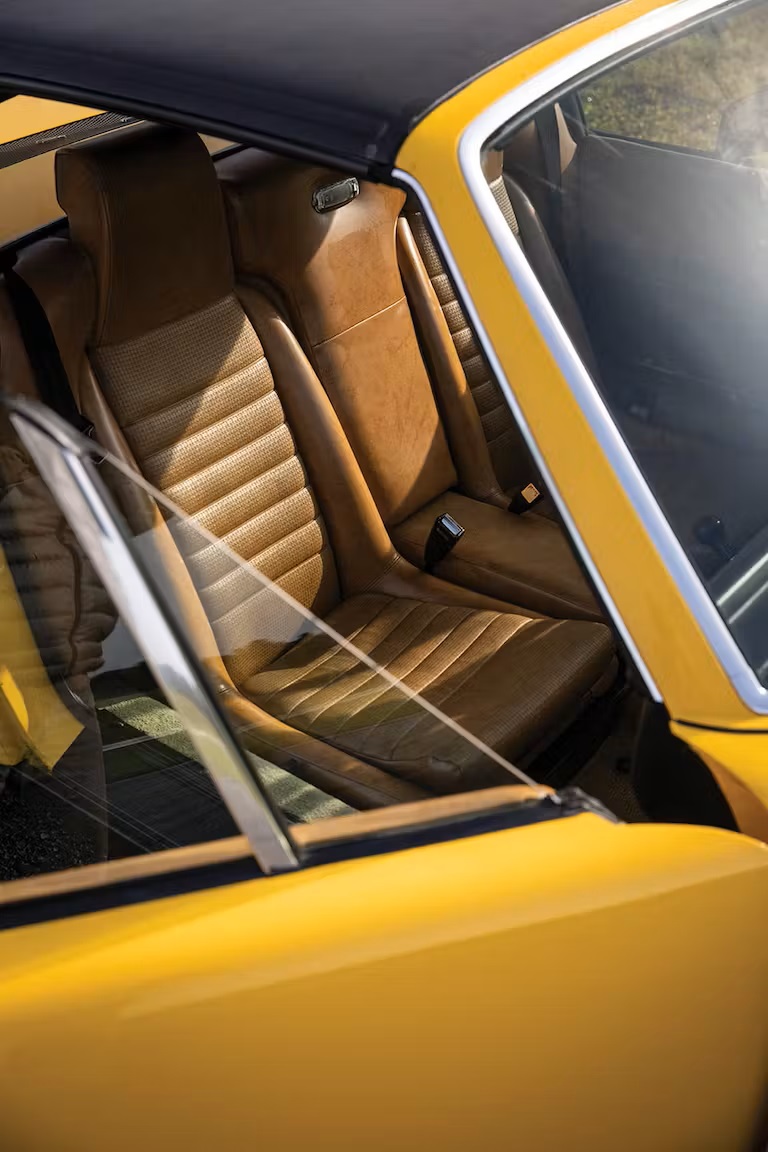
It didn’t help either 914 that in the early ’70s the value of the Deutschmark was increasing against the dollar, so Porsche regularly increased the price to keep up with the changing exchange rates. For the 914/6, that was untenable. Despite promise on the race track, including class wins at Le Mans and Daytona, victory at the Nürburgring’s Marathon de la Route and regular success in SCCA competition, the six-cylinder 914 was dead weight in the showroom. After 1972, Porsche discontinued the 914/6 after selling just 3351 units.
The four-cylinder car, meanwhile, did well. In America, Porsche was selling three times as many 914s as they had 912s. By 1971 it had dethroned the Opel GT as Germany’s most prolific sports car.
Updates to the 914 were regular but minor. For 1972, the passenger’s seat changed from a fixed chair with movable footrest to an adjustable one with no old-fashioned footrest. Porsche also added better soundproofing, and improvements to the 1.7-liter VW that led to better fuel economy. With the 1973 model year the 914/6 was gone with no direct replacement, but the 914 range did add a 2.0-liter model powered by a bored and stroked version of the 1.7. Fuchs alloy wheels came standard on this 2.0 model and were optional in the rest of the range. There were more soundproofing improvements for 1973 as well as a much improved shift linkage, and US cars got two rubber bumper guards to meet new crash rules. Car and Driver liked the 2.0-liter model, calling it “a whole lot better…now up to the level the 914 should have been when it was first introduced,” while Road & Track said, “The 2.0-liter engine is better than the figures show.”
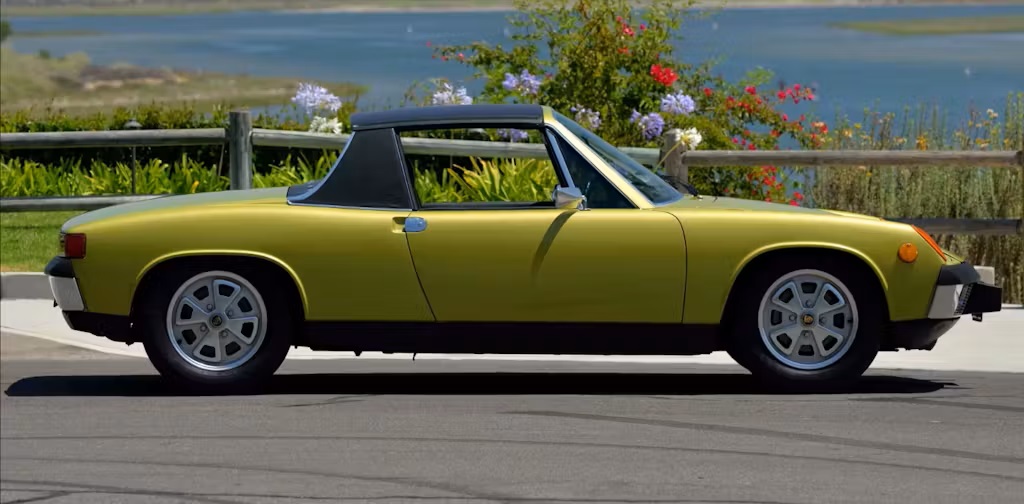
For 1974, Porsche raised the price of the 914 but the 1.7-liter base car had been bored out to 1.8. US cars got rear rubber bumper guards to match the front, and all 914s got new steel sports wheels similar to the ones found on the contemporary Super Beetle. There were also Limited Edition 914s in North America. Marketed to capitalize on Porsche’s domination in Can-Am racing, the special 914s sported either “Bumblebee” (black with yellow) or “Creamsicle” (white with red) paint schemes with a front spoiler, anti-roll bars, driving lights, aluminum wheels, extra gauges, and painted roll bar trim. About 1000 were built.
The 914 sprouted new bumpers in 1975, and US dealers offered a Performance Group option with anti-roll bars, eight-spoke cast aluminum wheels, and a front spoiler. Emissions changes in the US also led to a new exhaust, with California cars gaining a catalytic converter. Tartan cloth seat inserts also became an option, and there was a new range of colors to choose from.
Despite a mixed reception and unfavorable pricing, the four-cylinder 914 was a sales success, with 115,596 built from 1970-76. After the close of 914 production, the 2.0-liter model’s engine lived on in the one-year-only 912E, an interim model that bridged the gap between the 914 and the upcoming water-cooled, front-engined 924.
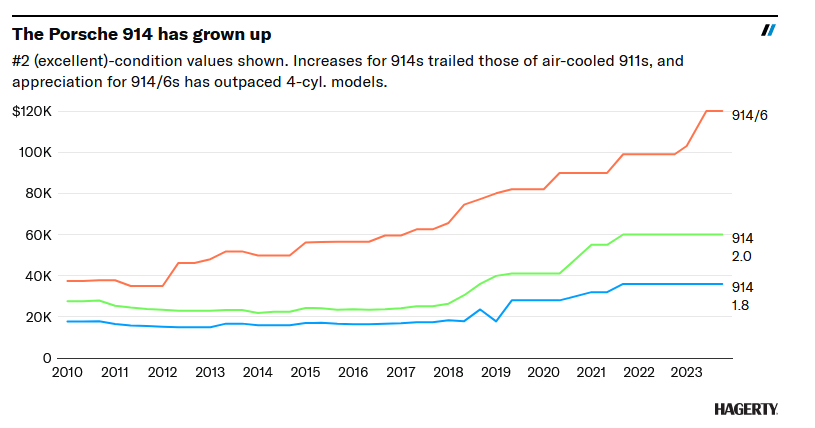
As 914s aged, they quickly turned into affordable used sports cars. As an entry-level developmental dead end for Porsche, which went in a very different direction with its 924 and 944, the 914 became the de facto (and original) “cheap Porsche.” When we created the Hagerty Price Guide Indexes back in 2009, we naturally included the four-cylinder 914 in the “Affordable Classics” index. After all, really good 914s were worth well under 20 grand then, and driver-quality cars could be had for barely 10. Today, though, it’s a stretch to call any 914 truly “affordable.”
Following the explosion in values for air-cooled 911s that started in the mid-2010s, attention turned to 914s starting in mid-2018 and prices for them surged until late 2021. The much rarer six-cylinder cars, meanwhile, have long had a more dedicated following and more lasting respect in the Porsche community, and their values have been gaining fairly consistently since the early 2010s. The tables have also turned vis-à-vis the 911 that gave the 914/6 its engine. The 914/6’s condition #2 (“excellent”) value of $120K is now higher than that of the 911T coupe ($93,000) and Targa ($86,000).

In general, Porsches and Volkswagens have a broad appeal that skews younger than many 50-year-old automobiles. Not so with the 914, with Baby Boomers making up nearly half of all insurance quotes for 914s, even though Boomers make up less than a third of the market as a whole. This is a bit surprising given that the 914 is a comparatively less pricey ticket into the classic P-car club. Then again, there are also newer, more practical and usable Porsches out there. Boxsters, Caymans, 944s, 968s, and even 996-generation 911s are all out there for similar or less money than what a clean four-cylinder 914 goes for these days.
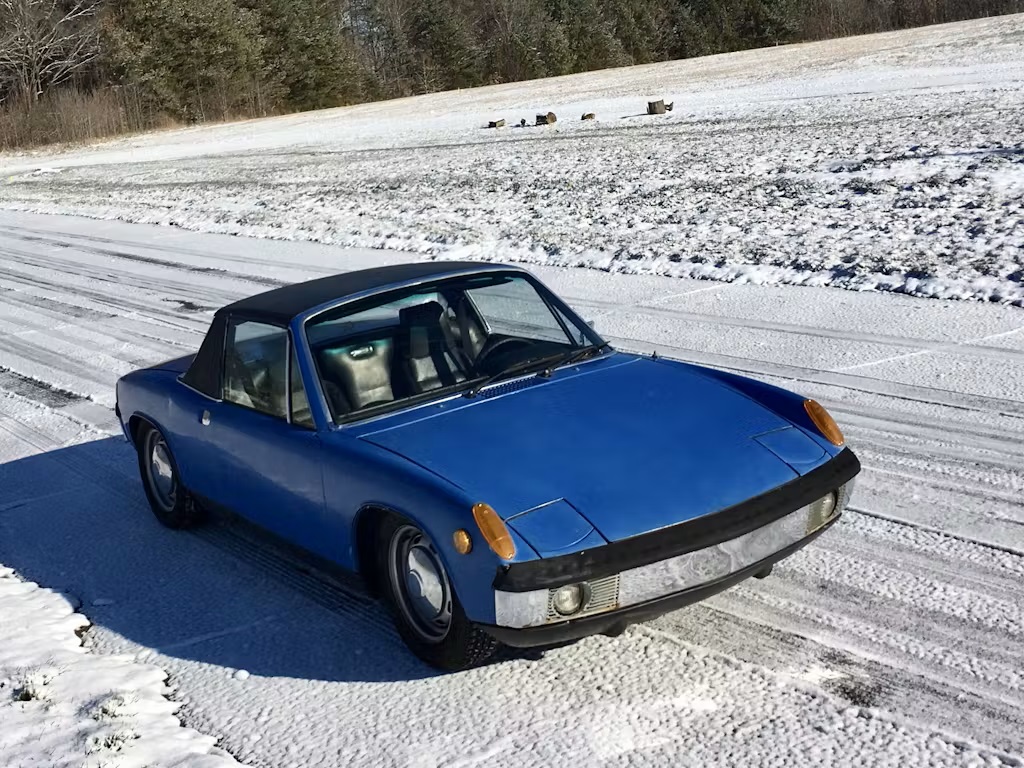
Looking outside the Porsche camp, there are also lots of classic British and Italian sports cars that have better looks, more personality, and similar performance that come much cheaper than a 914. Is a 914/4 a better car than an MGB? Probably. Is it twice as good, as prices suggest? That’s a much harder argument to make.
With time, Porsche’s ugly duckling has grown up, even if it never became a swan. The VW stigma has worn off after 50 years and, just as the Dino was eventually embraced by the Ferrari faithful, Porsche people now embrace the 914 as a proper P-car and they pay proper P-car prices for it. After peaking a couple of years ago, though, prices have mostly stayed flat even through the pandemic boom, so they appear to be fully priced for now.

Report by Andrew Newton
find more news here…
